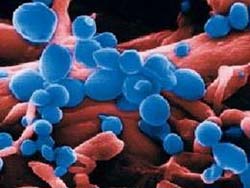Genetically modified poultry does not transmit the H5N1 virus
According to a study published in the journal Science on January 13, European scientists have succeeded in creating genetically modified chickens that do not transmit the A / H5N1 virus.
 After a period of research, experts from both Cambridge and Edinburgh universities confirmed that genetically modified poultry could be infected with influenza A / H5N1 but could not be transmitted to other children to erupt into a pandemic.
After a period of research, experts from both Cambridge and Edinburgh universities confirmed that genetically modified poultry could be infected with influenza A / H5N1 but could not be transmitted to other children to erupt into a pandemic.
According to researchers, this is an encouraging result and successfully prevented the spread of A / H5N1 virus in poultry flocks, which will contribute to reducing economic losses as well as reducing the risk of transmission to humans.
Scientist Laurence Tiley said that research is now in the early stages and that genetic modification is the first important step in the development of an immune-capable poultry flock . In addition, genetically modified technology has demonstrated the ability to enhance animal resistance, greatly improving economic and food security in many countries affected by bird flu.
Influenza A / H5N1 caused by viruses can spread from poultry to humans and cause high mortality, often occurring in the winter-spring season is always a concern of countries with developed livestock in the world. People with the disease have symptoms such as fever, body fatigue, muscle pain, sore throat, cough, eye pain, diarrhea, difficulty breathing. The disease progresses very fast and mortality rates are usually between 60-70%.
The first case of patients infected with influenza A / H5N1 was discovered in Hongkong (China) in 1997. The pandemic broke out globally since 2004.
- Detection of genetically modified H5N1 virus
- Create genetically modified version of MERS-CoV virus
- H5N1 virus in England breeds 99.96% virus in Hungary
- Genetically modified plants still cause doubts
- Genetically modified cigarettes help fight rabies
- Genetically modified food in Vietnam ever since?
- Genetically modified salmon in the US is controversial
- H5N1 flu appears in poultry in Ninh Thuan
- Things you should know about GMO genetically modified foods
- Infertile chickens have the ability to
- Genetically modified insects threaten genetically modified plants
- Using genetically modified foods is prone to cancer
 March 2012: Launching H5N1 vaccine for poultry
March 2012: Launching H5N1 vaccine for poultry Experts comment on the mysterious gradual disappearance of the Delta variant in Japan
Experts comment on the mysterious gradual disappearance of the Delta variant in Japan Danger of the two Delta . branch variants
Danger of the two Delta . branch variants 2020 pandemic flu attack humans?
2020 pandemic flu attack humans?